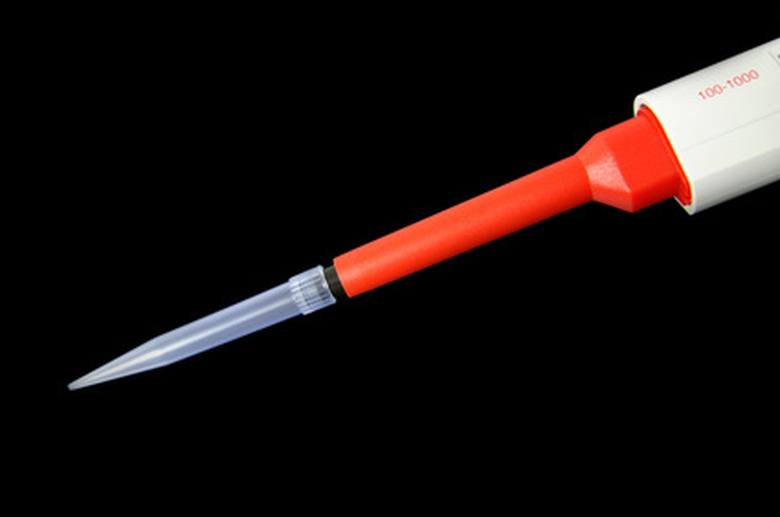How To Fix MLA Pipettes
MLA pipettes have been in use in science and medical laboratories for about 35 years. Prior to that, technologists and lab assistants used glass pipettes and mouth pipetting, which fell out of favor with the rising rates of hepatitis C and HIV/AIDS, and the need for greater precision and smaller volumes. MLA pipettes are a brand of automatic micro-pipettes which use a volume displacement method to accurately dispense a small amount of fluid, from 1 microliter to 10 milliliters. They use disposable tips, but the pipette body is a mechanical instrument and needs periodic repair and regular maintenance.
Step 1
Check lab records to determine the need for repair. The most likely cause of problems is a leaking O ring or internal seal, or a loose plunger. Regular cleaning is mandatory after each use. Routine maintenance is required at least monthly.
Step 2
Unscrew the body of the pipette according to the manufacturer's instructions and remove all parts. Inspect and replace the nozzle insert if required. Clean the inner seals and clean and lubricate the plunger mechanism. Replace inner seals if needed. Any other repairs will need professional servicing.
Step 3
Replace all parts and clean off the outside of the pipette. A simple calibration check can be made by using the MLA calibration kit and comparing the results of the pipette against those obtained with a newly calibrated and certified pipette. If this result is not satisfactory, the pipette will need scientific calibration against known standards using gravimetric analysis.
Step 4
Send the pipette to the manufacturer for scientific verification, calibration and repair if your laboratory is not suitably equipped. In-house calibration of the pipette can be performed if the laboratory is properly equipped with a gravimetric balance, a hygrometer, MLA calibration kit and a controlled environment.
Things Needed
- Normal saline
- Distilled water
- Glass beakers
- Clean soft cloth
- Pipette lubricant
- Replacement parts: inner seals, nozzle attachment
- MLA calibration kit
- Optional:
- Gravimetric balance
- Hygrometer
TL;DR (Too Long; Didn't Read)
Routine cleaning and maintenance of pipettes will help to prevent problems.
After each use, eject the tip.
Periodically rinse the pipette by pipetting normal saline, followed by distilled water; always use a tip.
Keep the outside clean by wiping with a clean damp cloth. Salt incrustation will destroy the accuracy of the pipette quite quickly.
Warning
Use of a dirty, leaking and therefore inaccurate pipette will invalidate all test or experimental data.
Cite This Article
MLA
Rock, Lorraine. "How To Fix MLA Pipettes" sciencing.com, https://www.sciencing.com/fix-mla-pipettes-7890200/. 24 April 2017.
APA
Rock, Lorraine. (2017, April 24). How To Fix MLA Pipettes. sciencing.com. Retrieved from https://www.sciencing.com/fix-mla-pipettes-7890200/
Chicago
Rock, Lorraine. How To Fix MLA Pipettes last modified March 24, 2022. https://www.sciencing.com/fix-mla-pipettes-7890200/
